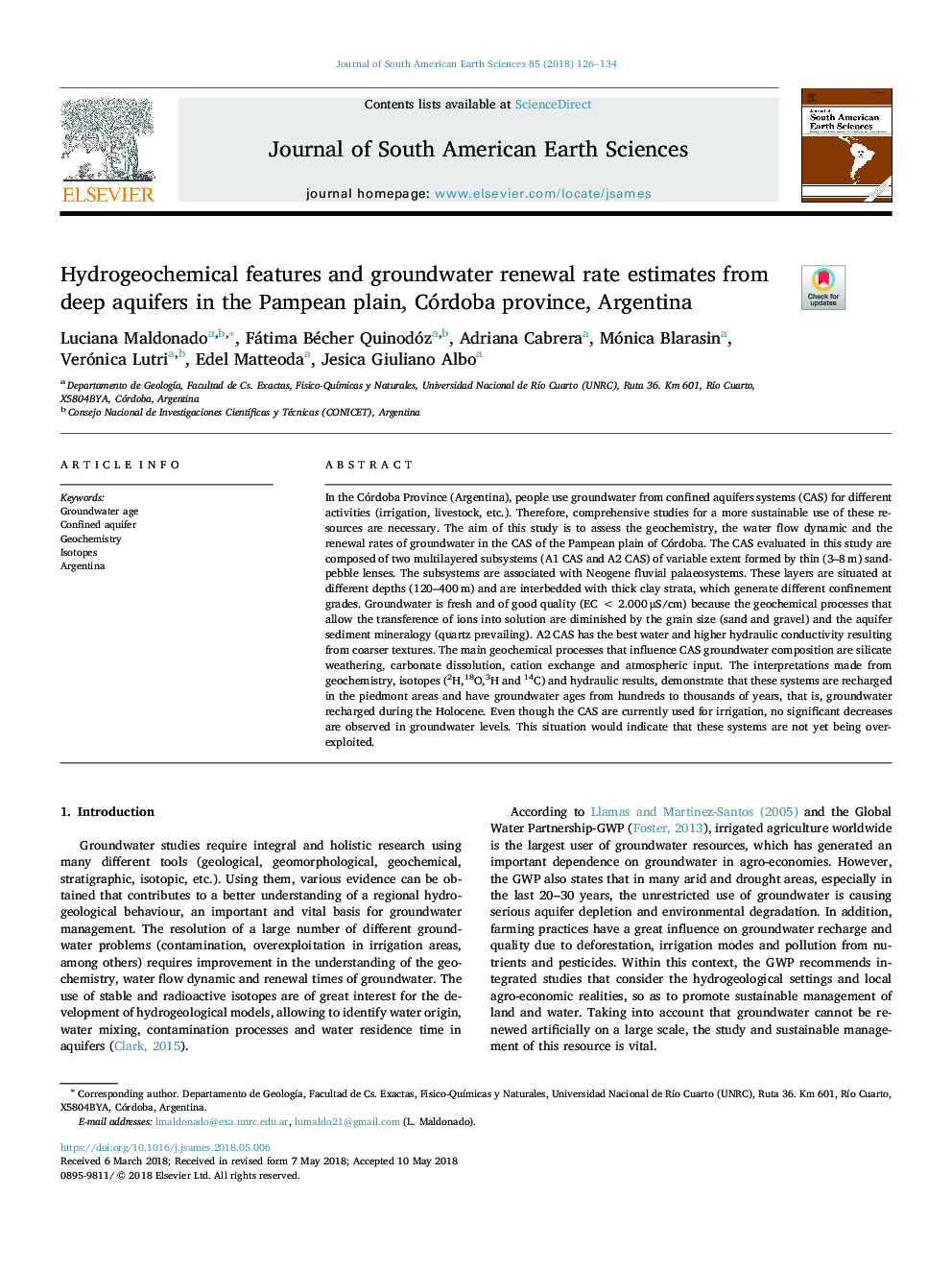| Article ID | Journal | Published Year | Pages | File Type |
|---|---|---|---|---|
| 8907620 | Journal of South American Earth Sciences | 2018 | 9 Pages |
Abstract
In the Córdoba Province (Argentina), people use groundwater from confined aquifers systems (CAS) for different activities (irrigation, livestock, etc.). Therefore, comprehensive studies for a more sustainable use of these resources are necessary. The aim of this study is to assess the geochemistry, the water flow dynamic and the renewal rates of groundwater in the CAS of the Pampean plain of Córdoba. The CAS evaluated in this study are composed of two multilayered subsystems (A1 CAS and A2 CAS) of variable extent formed by thin (3-8â¯m) sand-pebble lenses. The subsystems are associated with Neogene fluvial palaeosystems. These layers are situated at different depths (120-400â¯m) and are interbedded with thick clay strata, which generate different confinement grades. Groundwater is fresh and of good quality (ECâ¯<â¯2.000â¯Î¼S/cm) because the geochemical processes that allow the transference of ions into solution are diminished by the grain size (sand and gravel) and the aquifer sediment mineralogy (quartz prevailing). A2 CAS has the best water and higher hydraulic conductivity resulting from coarser textures. The main geochemical processes that influence CAS groundwater composition are silicate weathering, carbonate dissolution, cation exchange and atmospheric input. The interpretations made from geochemistry, isotopes (2H,18O,3H and 14C) and hydraulic results, demonstrate that these systems are recharged in the piedmont areas and have groundwater ages from hundreds to thousands of years, that is, groundwater recharged during the Holocene. Even though the CAS are currently used for irrigation, no significant decreases are observed in groundwater levels. This situation would indicate that these systems are not yet being overexploited.
Related Topics
Physical Sciences and Engineering
Earth and Planetary Sciences
Earth and Planetary Sciences (General)
Authors
Luciana Maldonado, Fátima Bécher Quinodóz, Adriana Cabrera, Mónica Blarasin, Verónica Lutri, Edel Matteoda, Jesica Giuliano Albo,
